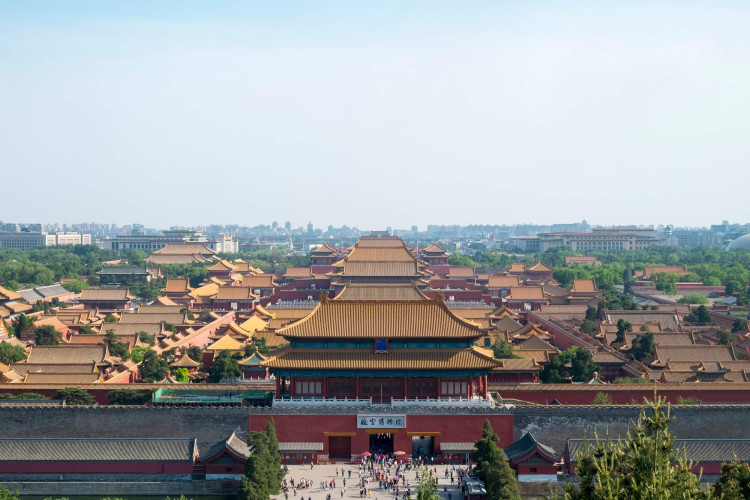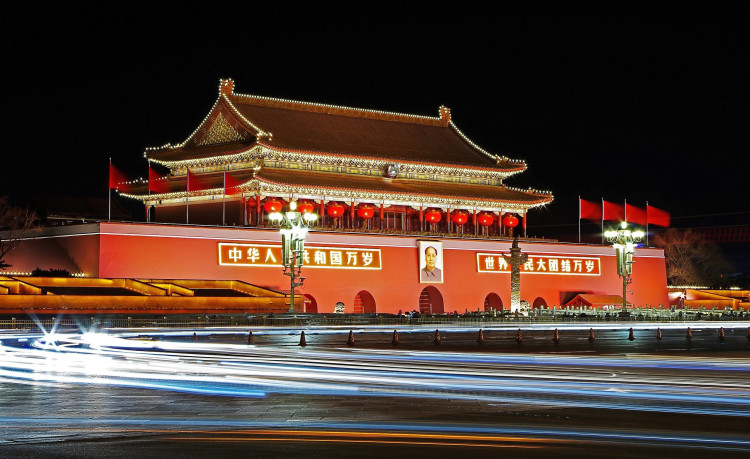Forbidden City in Beijing (China) - imperial palace and museum
Where is located Forbidden City?
Address of Forbidden City is 4 Jingshan Front St, Dongcheng, Beijing, China
show on map
When was built Forbidden City?
Built date of Forbidden City is 1406 - 1420

Facts, informations and history of Forbidden City
The complex was built between 1406 and 1420 and consists of 980 buildings with a total of over 9,000 rooms. The whole is spread over an area of 72 hectares (178 acres), more than 3 times more than the famous museum Louvre in Paris . The complex's dimensions are 753 meters from east to west and 961 meters from north to south.
Built during the Ming Dynasty (1368-1644), it served as the home of emperors and their homes for nearly 500 years, as well as the ceremonial and political center of the Chinese government. In its history, it was home to 24 emperors, 14 from the Ming dynasty and 10 from the Qing dynasty. He served them until Pu Yi left in 1924.
All main buildings are wooden constructions with roofed yellow tiles and supported on the terrace of white marble.
The Forbidden City is divided into two parts: the outer (front) courtyard covering the southern sections and used for ceremonial purposes and the inner courtyard (the Rear Palace) covering the northern sections and being the residence of the emperor and his family, it was used for everyday state affairs.
The main palaces of the outer and inner courtyards are arranged in three-part groups - forming the shape of Qian, representing Heaven.
The Forbidden City is surrounded by a wall 7.9 meters high (8.62 meters thick at the base and 6.65 meters above), as well as a moat 52 meters wide and 6 meters deep. The walls served as both defensive walls and retaining walls of the palace.
There are towers in the four corners of the walls. There are also four gates directed in four directions of the world, they are respectively: the Meridian Gate (Wu Men) in the south, the Gate of Divine Power (Shen Wu Men) in the north and two Flowering Gates in the west (Xi hua Men) and east (Donghua Men ).
The Meridian Gate, rising to a height of 38 meters, serves as a formal entrance to the complex. He leads guests through a number of courtyards, finishing at the Palace of Supreme Harmony.
The Palace of Supreme Harmony is the heart of the huge palace complex of the Forbidden City. It is the largest palace in the entire Forbidden City, located on a 3-storey elevation. It was used for great ceremonies such as the emperor's enthronement ceremony, the emperor's wedding or the ceremony of granting the title of empress.
At the top of the Palace of Supreme Harmony, in each corner of the roof, there are statues of ten mythical animals, showing their superiority.
The Palace of Moderate Harmony is located between the Palace of Supreme Harmony and the Palace of Permanent Harmony. These three buildings are located on the central axis of the Forbidden City and are called the Three Great Palaces of the Outer Court.
The Permanent Harmony Palace stands at the north end of a three-level marble terrace. It has a similar style to the Palace of Supreme Harmony, but it is slightly smaller, but larger than the Palace of Moderate Harmony.
In the center of the inner courtyard there is another set of three palaces. From the south they are the Palace of Heavenly Purity, Palace of the Union and Palace of Earthly Peace. Smaller than the palaces of the Outer Court are the three palaces of the Inner Court, they were the official residences of the emperor and empress.
There are numerous imperial designs throughout the complex, mainly with dragons and phoenixes. Dragon designs were used to defend the emperors and there are as many as 12654 in different styles here. On the other hand, Phoenix patterns represented emperors.
Noteworthy are also the red doors of the main buildings, they are decorated with gold-plated nails. Most gates have nine rows of nails, each row consisting of nine pieces. This is because nine means superiority and eternity in Chinese culture.
While exploring the complex, you can see a stunning array of ancient treasures and buildings. Noteworthy are ancient jade porcelain, paintings, calligraphy, embroidery, varnish products and ceramics.
Legend has it that the complex has a total of 9,999 and a half rooms, because only God can have the right to 10,000 rooms. Each of the rooms is decorated with a statue, the most important of them have a maximum of 10.
Because the Forbidden City is made of wood, fire protection is crucial. There are 94 underground hydrants, 4,866 fire extinguishers and 55 special fire places.
There is also a special fire prevention department that checks fire-fighting equipment on a daily basis. One of their daily exercises is running along the city walls with fire hoses. In addition, because of the lack of access by fire trucks, they must know the entire system by heart to get to the place of fire as soon as possible.
Over 1,000,000 employees, including over 100,000 craftsmen, took part in the construction.
The name "Forbidden City" is derived from the fact that, being the residence of Chinese emperors and their families and court service, court access was forbidden to "ordinary mortals" living outside the walls.
The Forbidden City is one of the most visited museums in the world, annually visited by about 17 million tourists. And all this despite the fact that only about 60% of the entire complex is open to the public.
In 1987, the Forbidden City was inscribed on the UNESCO World Heritage List and is recognized as the largest preserved collection of ancient wooden structures in the world.
Architect of Forbidden City
How many meters have Forbidden City?
Height of Forbidden City is 37.95 meters


Construction/building type
Building Forbidden City is of type The Art Museum, Royal Palace
Architectural style
Architectural style of Forbidden City is Chinese architecture
Other dimensions, parameters and frequently asked questions

What area have Forbidden City?
Forbidden City have area of 720,000 m² (72 hectares / 178 acres)
What material is the building made of?
Forbidden City is made of the following materials: wood, white marble, gold
Other names
The building is also known by other common names or in the original language, i.e. Zijin Cheng, Forbidden Palace
Is the building on the UNESCO World Heritage List?

The listing took place in the year 1987.
Details of the entry are available on the Unesco website at https://whc.unesco.org/en/list/439bis/
Official website
The official website of the building, where up-to-date information can be found, is https://en.dpm.org.cn/
Photo gallery Add photo
Location on map / How to get there







































Comments to Forbidden City (3) Average rating: 4.5 Add comment / Rate building
Based on 3 comments